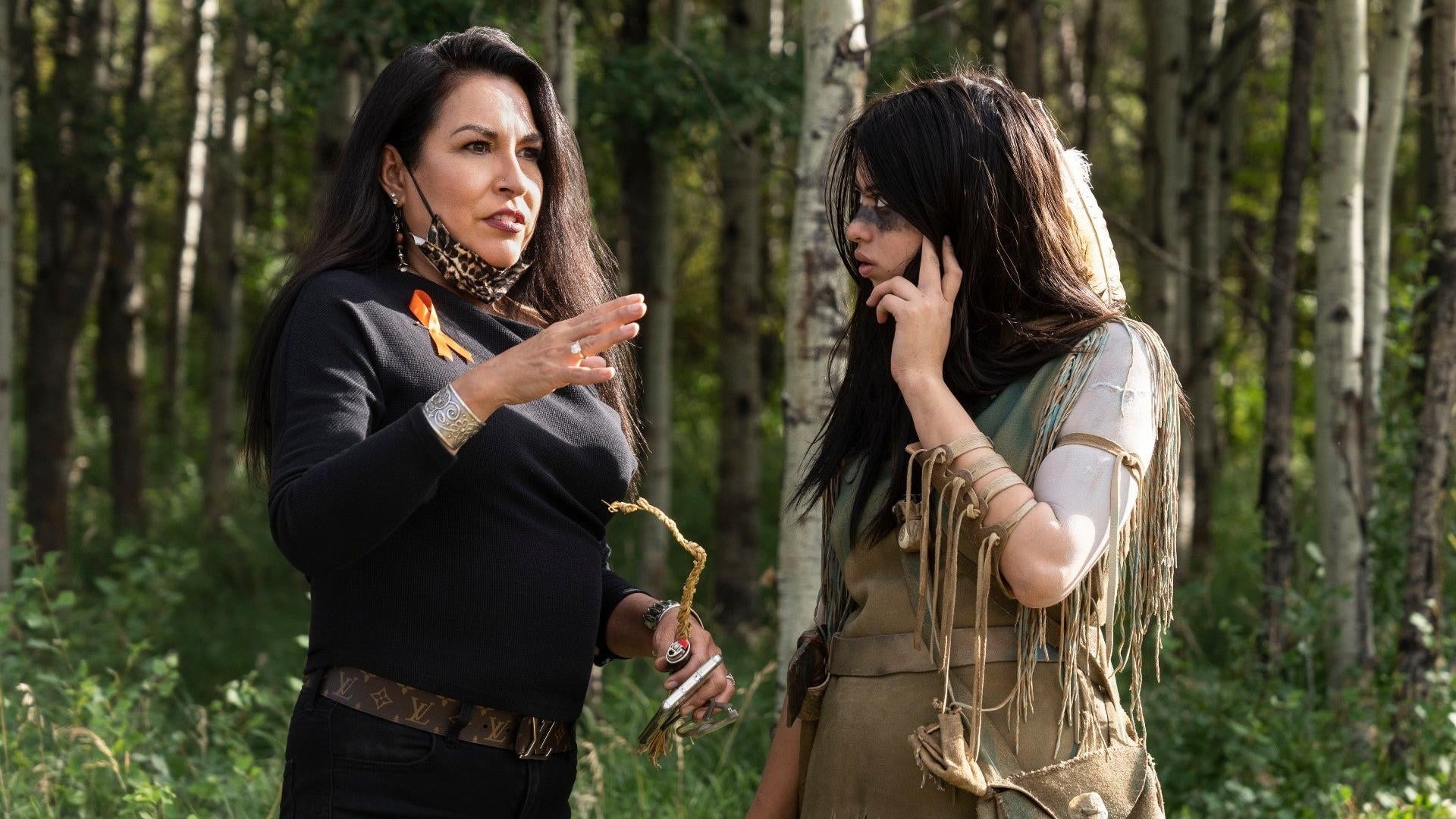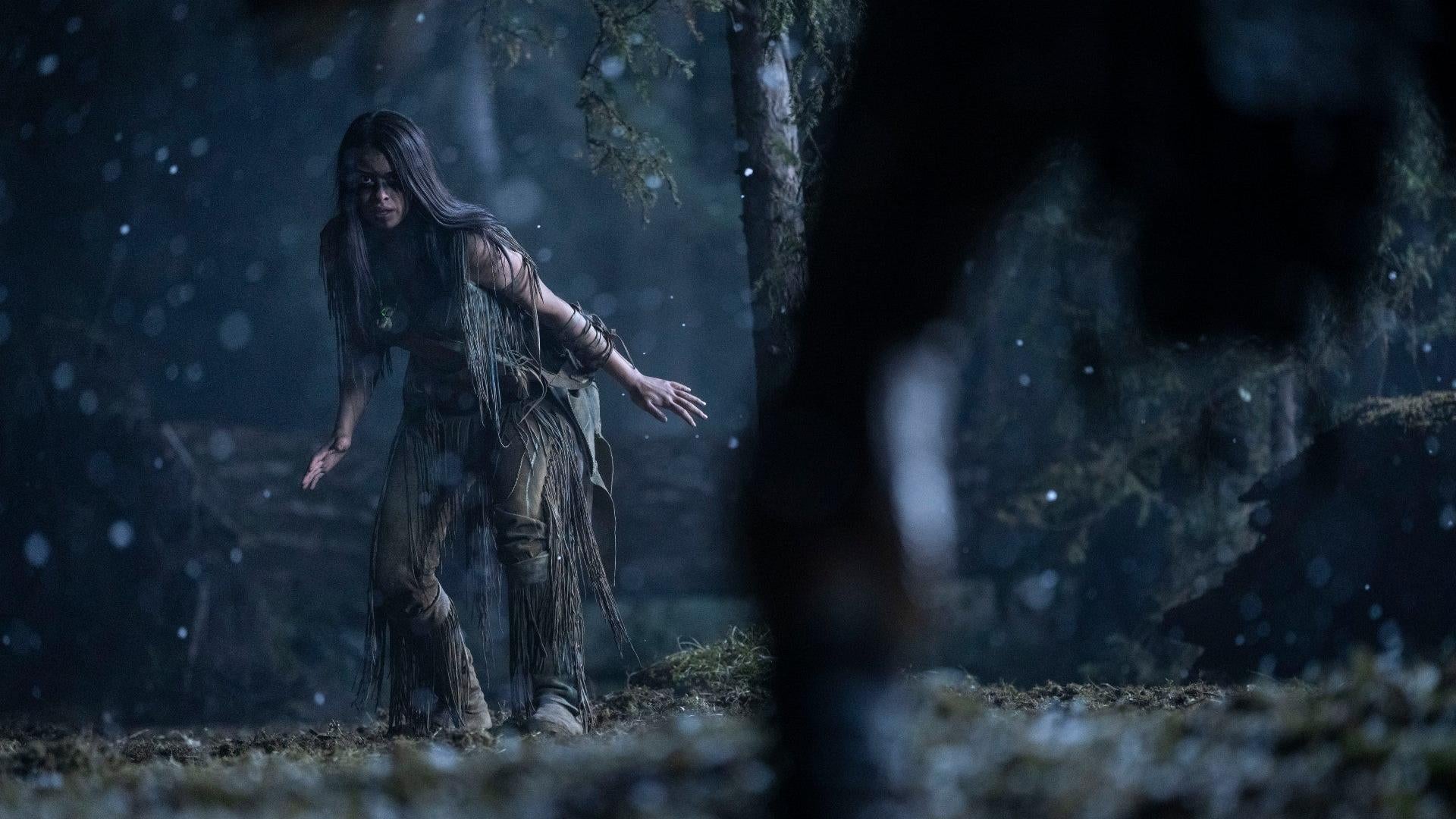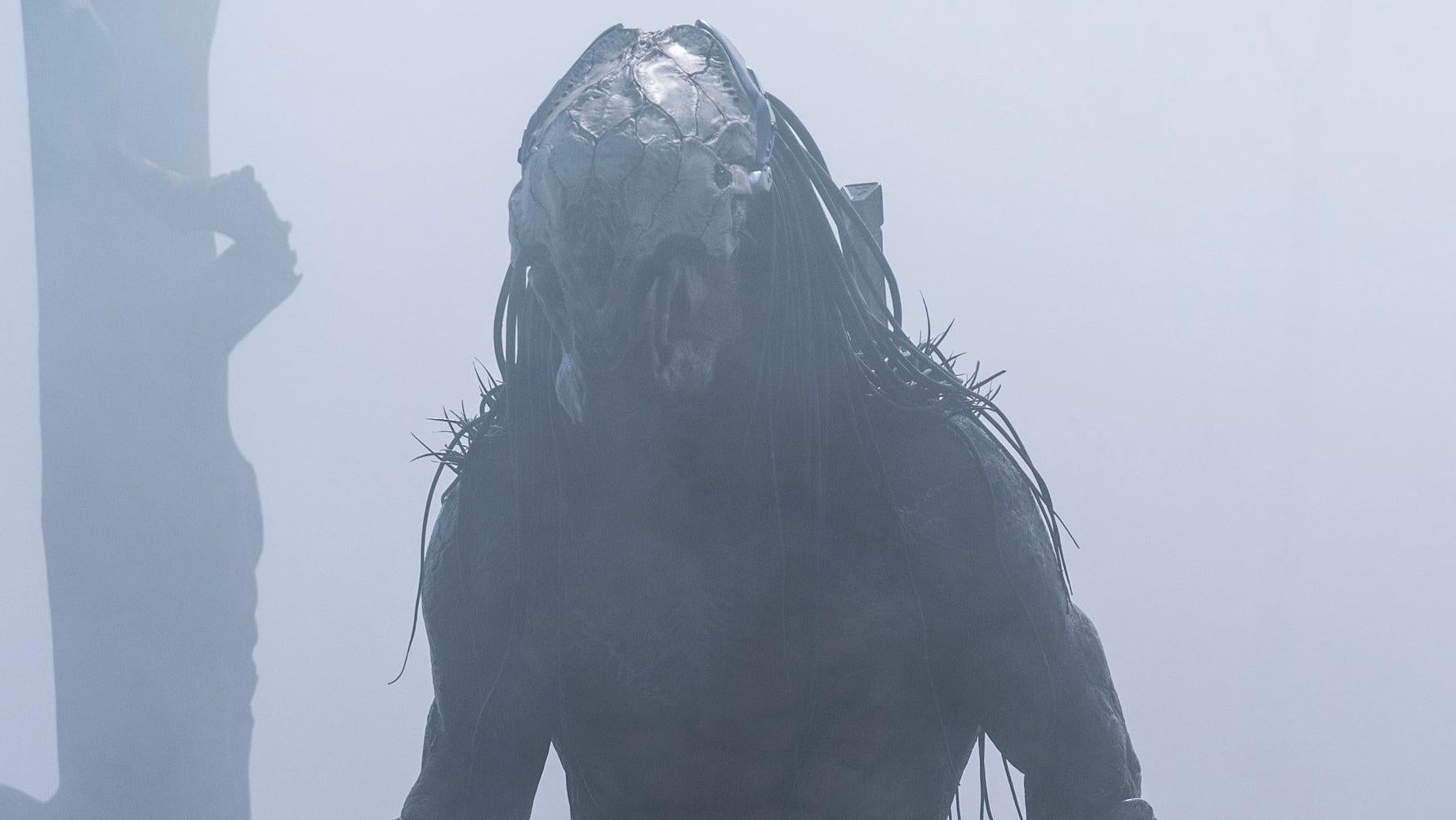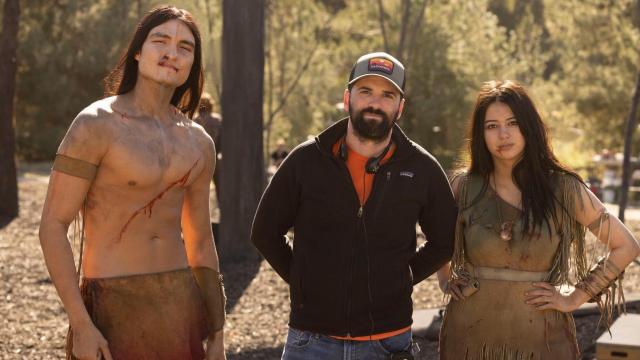In the 35 years since the release of Predator, Hollywood has continually struggled to make a good sequel. Sure, the second one is ok and the ideas behind some of the others — like going to other planets and crossing over with Alien — are good, but overall, it’s rarely, if ever, panned out. So if audiences are sceptical about a new Predator movie going straight to streaming, set centuries before the original, staring a largely unknown cast of Native American actors, you can hardly blame them.
However, once they press play on Prey (coming to Hulu August 5), those doubts should go away. Directed by Dan Trachtenberg (10 Cloverfield Lane), Prey stars Amber Midthunder as Naru, a young Comanche woman trying to prove to her tribe that she’s just as good of a hunter as the men, and maybe even better. She gets a chance to do that when a killer alien comes to Earth to hone his skills too, and very quickly, it’s game on. The film is propulsive, exciting, and gory as hell.
So how did the Predator franchise get to this point? Gizmodo spoke with Trachtenberg and his producer Jhane Myers about where exactly the film came from, why it’s called Prey, the pluses and minuses of filming on location, multiple ways fans can watch the film, and how it fits into the overall lore of the Predator franchise. Some of these questions have answers that trace back to Mad Max: Fury Road as well as Star Wars. Read the interview below.
[Full disclosure: I’ve known Dan and his family personally for several years.]
Germain Lussier, Gizmodo: Normally, big franchise movies don’t just come out of nowhere but this one has that sense about it. So I’d love to hear how you both came on board. Dan, when the news of this film broke in 2020, you said you’ve been working on it for four years.
Dan Trachtenberg: Yeah, I pitched this shortly after 10 Cloverfield Lane came out. I was really hellbent on making… when did [Mad Max] Fury Road come out? It was after Fury Road.
Gizmodo: 2015.
Trachtenberg: Yeah. So, I just really wanted to do that. Wanted to tell a movie, an action movie, whose story was primarily told through the action itself, but not wanting to rely on it just being that visceral experience, wanting it to be an emotional one as well. So I sought to give it the engine of a sports movie, the engine of a real underdog story. And in thinking about that, it kind of led me down the road of like, “OK, well, what if it’s about a group of people in a culture that is sort of an underdog in pop culture?” And Native Americans, and Comanche even more specifically, have always been relegated to playing the sidekicks or the villains of a story and never been the leads of their own. So all of that infused the genesis of this pitch and now, the movie.
Gizmodo: And Jhane, when did you come onboard the film?
Jhane Myers: I came on board… pretty much just right before we went into pre-production. Because you have to remember covid factored into this, right? So everything was shut down and all the other projects I was working on were sidelined or shut down. And then I was interviewing for other things. And then this was the last thing that I interviewed for, and I got this. I got this and I was excited, but I didn’t know I had it.
Scott Aversano, who is our EVP at 20th, reached out to me and said, “We’re looking for a producer.” He was looking for a Native producer, not necessarily a woman and not necessarily Comanche, and I happened to be both of those things.
I grew up [watching] Predator and I like action adventure… and then right before Thanksgiving, I got a call [that] was like, “Can you start last week?” And I’m like, “What?” So I was really excited. So everything else I had interviewed [for] and I was in talks to do, I just called my rep and I’m like, “Forget everything. We’re doing this and here we go.” So it’s been an adventure. It’s been incredible.

Gizmodo: Dan, how did this actually become a Predator movie? Did you know the studio wanted to make a Predator movie or did you just walk in and say “Predator”?
Trachtenberg: No. In fact, the reason why it’s called “Prey,” or one of the reasons, is because I knew that they were either in pre-production on the Shane Black movie or just about to be in production. And so I knew they were making another one, but this was too good of an idea to hold in. And so I thought maybe if I pitch it the way the Star Wars movies were functioning at the time — where they had the main trilogy, then they had these other offshoots. Because I knew Shane’s movie was present day and doing a lot of crazy things, taking bold swings and all that. So I thought, “OK, well, the thing that might be appealing is to do a period piece that’s sort of a back-to-basics approach.” So that was the impulse. And so Prey was like, it’s not called “Predator Something.” It’s going to be called its own thing that’s sort of a reflection of the title and all that.
Gizmodo: Oh cool. So I read the press notes and saw how much went into making the film feel authentic to both the people and the time period. But to me, the thing that really stood out was the location shooting. I feel like you don’t see that much anymore. I know Dan, you mentioned Fury Road, so how early was that decision made, and at any point did you guys regret making the movie on location?
Trachtenberg: Every every hour of every day I regretted it. [laughs] I mean, even specifically, what’s interesting is the burnt glade sequence. I really wanted to shoot that on stage. I really was like, I know it can look exactly as we want it to and control the right level of mist layer and all that. But covid restrictions didn’t allow us and we really needed stuff to shoot on stage. We needed cover sets because when weather happens, you need somewhere to go. So that felt like the obvious choice. But covid didn’t allow us to have the degree of smoke that we needed inside. And also the one moment where those horses come down the hill was going to be very tricky if we were shooting on stage. So it forced us to shoot that outside.
And it was the only time I’ve ever felt totally defeated working on anything, where the first half of the first day of shooting, the wind was blowing our smoke everywhere and we’re like “This is not going to happen.” And at lunch, I had a little bit of a freakout and I was like, “All right, so can we stop down? Can we go shoot something else? Do we try and rewrite this as a night sequence?” Like, I need to refigure everything out. And then the line producer, Marty Ewing, pulled me aside and said, “Dan…” We got one shot right before lunch. We had just figured out where to place things with the wind and all that. We had trucks going by, just driving instead of keeping it stationary, And [Ewing] was like, “I think we just figured something out. Let’s just handle it. One shot at a time, you know? Movies are made one shot at a time.”
I will never forget that. And it’s such a useful tool, not just for filmmaking, but for life. The one thing at a time thing. And we pulled off this great sequence. By having a little bit of that natural light pouring through and seeing a little bit of sky up there, it really does make it visually much more special, as is the whole movie that we shot outside. There’s so much even though the lighting was a challenge and all that, I think it certainly does pay off visually.

Gizmodo: Without a doubt. I’m curious also about language choices. The version I saw — I was lucky enough to see this in a theatre — was mostly English with some Comanche and French. Was it ever going to be fully in Comanche? Are there other versions?
Trachtenberg: Yeah, the initial script had a little thing of like “This is to be shot in Comanche” and that just wasn’t in the cards for us as we went forward. And thankfully, Jhane had some affiliations to where Star Wars and Finding Nemo were translated into Navajo. And Jhane, you can speak to this in terms of where the inspiration came from to have the movie be dubbed in Comanche and have that as an option on Hulu.
Myers: Yes. And while I didn’t work on [Star Wars and Finding Nemo], I live in New Mexico and I worked at a museum, so I was around when that happened. And I knew that they were doing it which, for Native people, because this is never done, was pretty phenomenal, even if it was on a pre-released film. So in my head, my dream was to always have this done in Comanche. To have something done in my tribal language. So it worked out and it was amazing. So now it’s a choice and people can choose all over the world to hear the whole film in Comanche.
Trachtenberg: And something that I’m really excited about, I will say, is that there are no subtitles at all in the movie. We are very linked to [the main character] Naru and her experience of the story. And so even when those French bird trappers show up, it’s as foreign to us as it is to her, unless you speak French. But even still if you speak French, because they’re speaking such a very specific version of French, it’s not going to be cogent to most folks. So I think language still plays a very specific role even in the original release of the movie.

Gizmodo: The film obviously draws from the originals in a bunch of ways, Easter eggs, plot points, etc., but did you ever look at anything else Predator like the comics or books? What was your canon for the lore of the Predator?
Trachtenberg: We definitely were aware of a lot of the ancillary Predator things. Even in terms of having the runic alphabet, I think that was made available to us because of the fans that have made that survive. It didn’t come through some sort of 20th Century Studios vault that has the Bible of it. I can say another fun thing, too, if you want to have a little spoilery thing that I have not mentioned to anyone yet, which is [SPOILER REDACTED. Check back next week!].
Gizmodo: Oh, that is awesome. I had no idea. Now, the design of the Predator is different from the original in some ways, but similar too. Did you approach it as almost a devolution of the original since it happens before? What was the thought process fitting the design of this Predator into the world of Predator?
Trachtenberg: The challenge of this movie is it’s 300 years prior, but still has to feel far more advanced than any anyone on Earth is ready to deal with, or seemingly ready to deal with. And I didn’t want to fall into the trap that the Star Wars prequels fall into where things are older, but they’re shinier and newer. And I think that was not a pill everyone was ready to swallow when they watched those movies.
So I needed this Predator to feel certainly older, but I also wanted to make sure it felt more alien, more creature-like, than it had previously, which meant that I didn’t want to be as armoured as it had been. And then all of the technological advancements had to be in the weaponry. So we found ways in which to make the weapons feel like some of them are versions that we had seen before. Some of them function in different ways. And then there are other new gizmos that can be fun for diehard fans of the franchise to get to see something new.
But I think making it, I was describing [our Predator] as sort of from a different hemisphere. Like it’s a cousin of the ones that we had seen before. That can kind of liberate us from being too tied to the evolution of a species and not thinking too hard about that, and just thinking they may be from a planet where they all may look a little bit different from each other.
Prey is available exclusively on Hulu August 5.
Want more Gizmodo news? Check out when to expect the latest Marvel and Star Wars releases, what’s next for the DC Universe on film and TV, and everything you need to know about House of the Dragon and Lord of the Rings: The Rings of Power.
